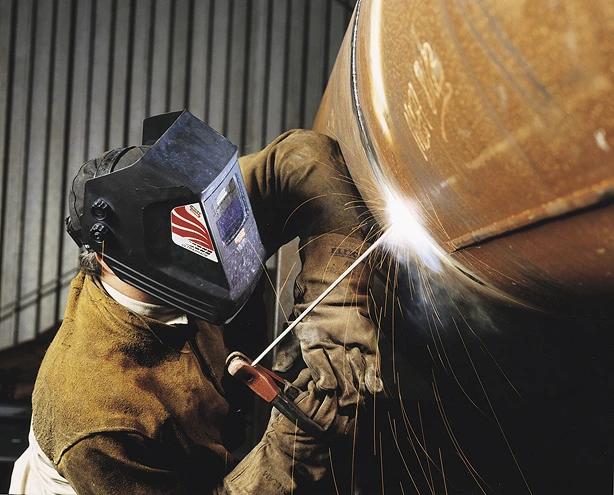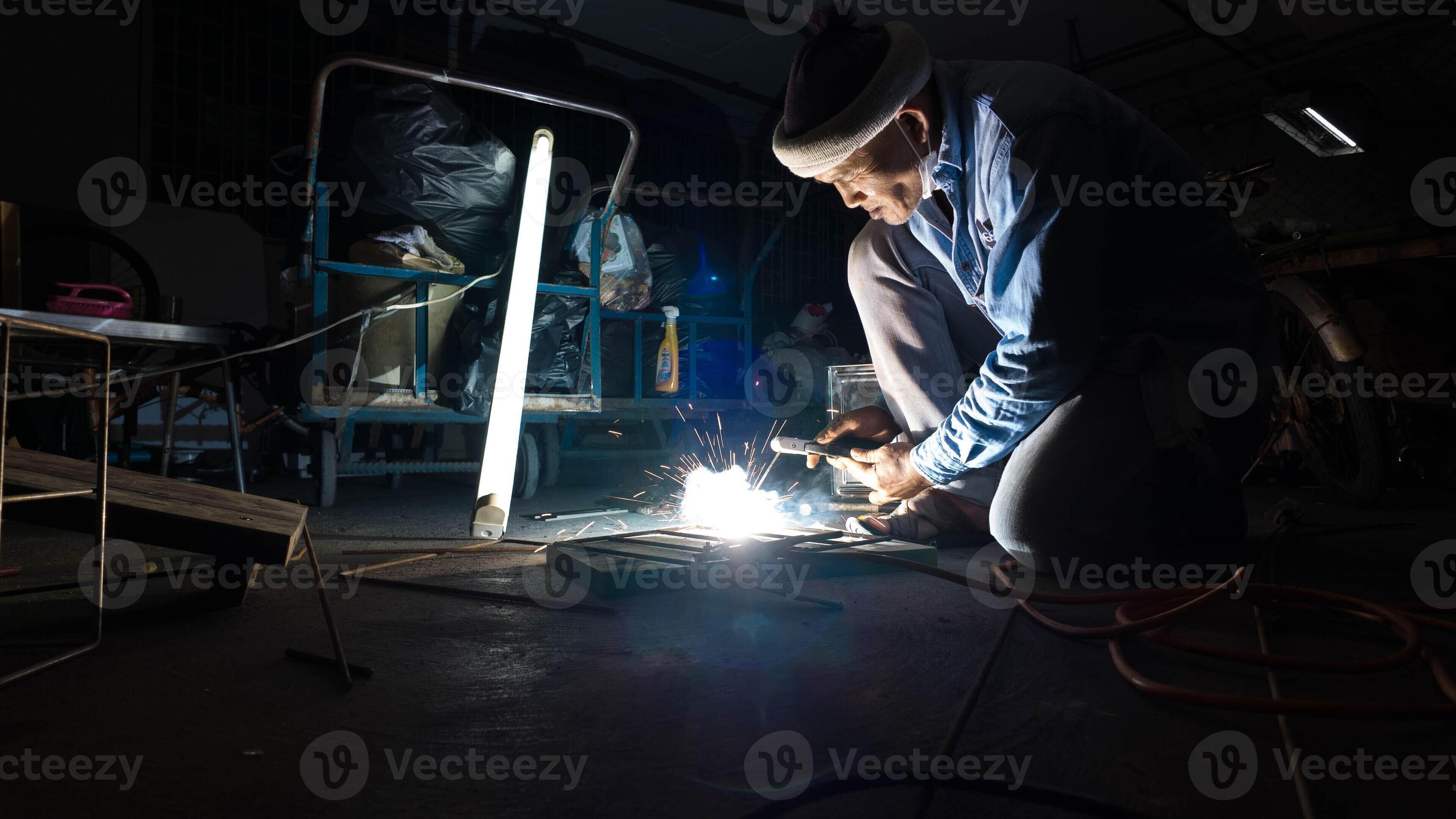Common Welding Repair Service Issues and Exactly How to Address Them Efficiently
Welding repair services frequently experience a variety of concerns that can jeopardize the stability of the last item. Common troubles consist of poor penetration, porosity, and imbalance, among others. Each problem provides unique challenges that call for specific methods for resolution. Understanding these concerns is necessary for welders aiming to enhance their outcomes and skills. This discussion will discover these typical welding fixing problems and reliable approaches to address them.
Inadequate Infiltration
Inadequate penetration happens when the weld steel fails to fully fuse with the base material, causing weak joints and prospective structural failings. This concern commonly stems from not enough heat input, inaccurate electrode angle, or inappropriate welding speed. Welders may experience insufficient penetration because of a miscalculation of the necessary parameters for a certain material density or kind. In addition, contamination on the base product's surface area can impede reliable bonding, intensifying the problem. To address inadequate infiltration, welders need to guarantee suitable settings on their tools and maintain a tidy work surface. Regular inspection of welds is recommended to identify any type of deficiencies early, enabling for prompt adjustments and the avoidance of endangered structural stability in welded assemblies.
Porosity
Porosity is a typical flaw in welded joints that manifests as tiny gas bubbles trapped within the weld steel. This flaw can endanger the stability of the weld, leading to reduced toughness and possible failing under anxiety. Montana Mobile Welding and Repair Belgrade Fabrication. Porosity usually arises from contamination, wetness, or improper welding strategies, which enable gases to get away into the liquified weld swimming pool. To resolve porosity, welders must assure appropriate surface area preparation, keep a tidy workplace, and utilize suitable welding parameters. In addition, choosing the appropriate filler material and protecting gas can reduce gas entrapment. Regular examination and testing of welds can assist identify porosity early, ensuring prompt restorative actions are taken, therefore protecting the top quality and dependability of the welded framework
Misalignment
Imbalance in welding can emerge from various aspects, consisting of inappropriate configuration and thermal expansion. Comprehending the origin is crucial for effective resolution. A number of modification methods are readily available to realign elements and guarantee structural stability.
Reasons for Imbalance
Welding misalignment typically stems from a range of underlying concerns that can endanger architectural stability. One key cause is inappropriate fit-up of elements prior to welding, which can result in gaps and irregular surface areas. Variants in thermal development throughout the welding procedure can also lead to distortion, especially if the products being signed up with have various coefficients of expansion. In addition, poor fixturing and securing might stop working to hold components safely in position, bring about activity throughout welding. Improperly kept equipment, consisting of welding machines and devices, may present disparities in the weld bead, further adding to imbalance. Finally, operator mistake, coming from inadequate training or experience, can also play a substantial duty in creating misaligned welds.
Correction Methods Offered
Resolving misalignment efficiently requires a mix of restorative strategies customized to the particular issues available. One typical method is the usage of components or jigs to hold parts in the appropriate position throughout welding, guaranteeing constant placement. Furthermore, preheating the products can help in reducing distortion and boost fit-up. For considerable imbalance, mechanical adjustment strategies, such as using hydraulic jacks or clamps, can be utilized to remedy the placement before welding. Post-weld heat treatment may additionally be needed to ease anxieties caused by misalignment. Ultimately, mindful assessment and modification during the arrangement phase can prevent imbalance problems from coming to be considerable problems, advertising a smoother welding procedure and enhancing general structural honesty.
Distortion
Distortion is a typical obstacle in welding that can arise from numerous elements, consisting of uneven cooling and heating. Comprehending the reasons of distortion is important for carrying out efficient avoidance strategies. Addressing this problem not just boosts structural integrity yet likewise enhances the general high quality of the weld.
Reasons for Distortion
When subjected to the extreme warmth of welding, materials usually go through adjustments that can bring about distortion. This sensation primarily occurs from thermal development and tightening throughout the welding procedure. As the weld area warms up, the product increases; upon cooling, it contracts, which can create inner anxieties. On top of that, uneven home heating throughout a workpiece can exacerbate these anxieties, resulting in warping or bending. The kind of material additionally plays a considerable role; steels with varying thermal conductivity and coefficients of expansion might react in a different way, resulting in uncertain distortions. Furthermore, bad joint style and insufficient fixturing can contribute to misalignment during welding, raising the possibility of distortion. Understanding these reasons is vital for efficient welding repair service and avoidance techniques.
Prevention Techniques
Effective avoidance techniques for distortion during welding focus on regulating warm input and guaranteeing appropriate joint layout. Preserving a constant warmth input aids to lessen thermal development and tightening, which can bring about distortion. Utilizing techniques such as pre-heating the work surface can additionally decrease the temperature slope, promoting uniform heating. Furthermore, choosing proper joint styles, such as T-joints or lap joints, can improve security and lower tension focus. Carrying out correct fixturing to protect the workpieces in position even more aids in preserving placement throughout the welding process. Lastly, staggered welding series can distribute warmth more evenly, stopping localized distortion. By using these techniques, welders can greatly lower the possibility of distortion and enhance the overall top quality of their welds.
Fracturing
Cracking is an usual problem experienced in welding repair services, often resulting from numerous factors such as improper cooling prices, product choice, or inadequate joint prep work. The occurrence of splits can significantly jeopardize the honesty of the weld, bring about potential failings throughout procedure. To resolve this problem, welders should first analyze the root triggers, ensuring that products work and appropriately selected for the certain application. In addition, controlling the air conditioning rate throughout the welding process is crucial; rapid cooling can cause stress and anxiety and lead to breaking. Proper joint layout and preparation also add to decreasing the threat. Executing these techniques can boost weld top quality and durability, eventually minimizing the possibility of cracking in completed weldments.

Insufficient Fusion
A substantial problem in welding repair work is incomplete blend, which occurs when the weld steel does not effectively bond with the base product or previous weld passes - Montana Mobile Welding and Repair Belgrade Fabrication. This flaw can lead to weaknesses in the joint, possibly endangering the stability of the bonded framework. Elements contributing to insufficient combination include insufficient heat input, improper welding strategy, and contamination of the surface areas being signed up with. To address this issue successfully, welders must ensure appropriate pre-weld cleaning and surface area preparation, as well as change their welding criteria to attain appropriate penetration and combination. Regular inspection during the welding procedure can likewise aid determine incomplete blend early, permitting prompt restorative actions to improve the general quality of the weld
Overheating
While welding fixings can enhance architectural stability, overheating provides a significant difficulty that can cause material degradation. Excessive warm during welding can modify the mechanical residential properties of steels, causing minimized stamina, boosted brittleness, and bending. This sensation is especially critical in high-stress applications where architectural dependability is critical. Identifying overheating can entail aesthetic assessments for discoloration or distortion, in addition to keeping an eye on temperature during the welding process. To mitigate the threats connected with overheating, welders ought to employ ideal methods, such as managing warm input, readjusting travel speed, and utilizing appropriate filler materials. In addition, carrying out pre- and post-weld heat treatments can aid restore product properties and boost the overall top quality of the repair, making sure long-term performance and safety.
Regularly Asked Concerns
What Are the Common Signs of a Welding Issue?

Just How Can I Examine My Welds for Top quality?
To evaluate welds for top quality, one can use visual examinations, ultrasonic screening, and radiographic methods. Each strategy assures structural stability, identifies problems, and validates adherence to specified requirements, eventually improving the integrity of the bonded joints.
What Security Precautions Should I Take While Welding?
When welding, one need to focus on safety by putting on appropriate personal protective tools, guaranteeing correct air flow, securing combustible products away, maintaining a clean work area, and being aware of surroundings to protect against injuries and crashes.
Can I Fix a Weld Without Redesigning the Entire Joint?
Repairing a weld without renovating the whole joint is feasible, depending on the damage (Montana Mobile Welding and Repair). Methods such as grinding, adding filler material, or using a welding procedure can efficiently address specific problems while protecting the surrounding structure
What Devices Are Essential for Effective Welding Fixes?
Crucial devices for reliable welding fixings include a welding maker, cable brush, grinder, protective gear, clamps, and filler materials. Each device plays an important function in making sure quality and safety during the repair work process. Porosity usually occurs from contamination, moisture, or improper welding techniques, which enable gases to get away into the liquified weld pool. Poorly conserved devices, including welding equipments and tools, may present variances in the weld bead, more contributing to misalignment. When subjected to the intense heat of welding, materials usually undergo changes that can lead to distortion. Cracking is a typical problem encountered in welding fixings, commonly resulting from various aspects such as incorrect air conditioning rates, material selection, or poor joint prep work. A substantial problem in welding repair work is incomplete blend, which happens when the weld metal does not adequately bond with the base product or previous weld passes.
Comments on “Fast fixes to weld misalignment in Montana Mobile Welding and Repair Fabrication”